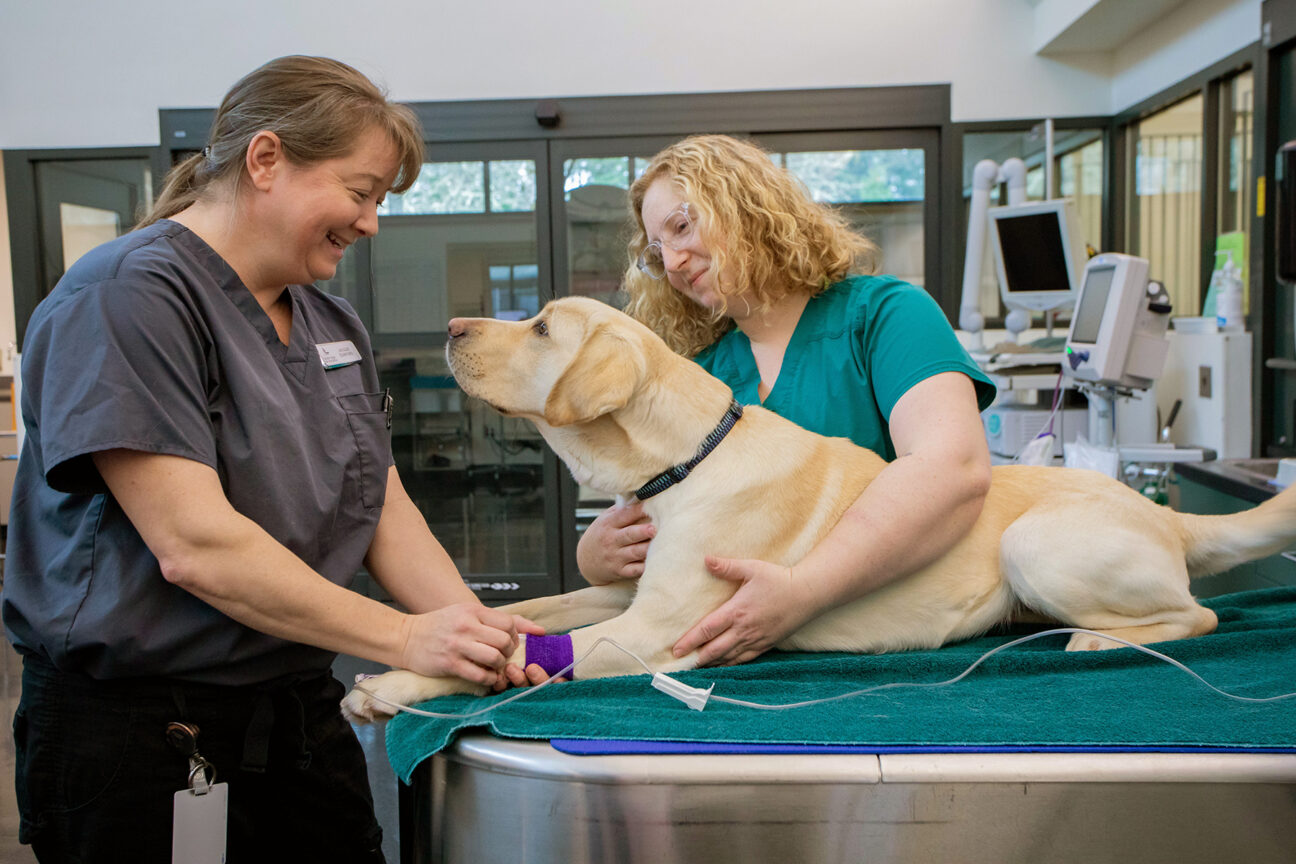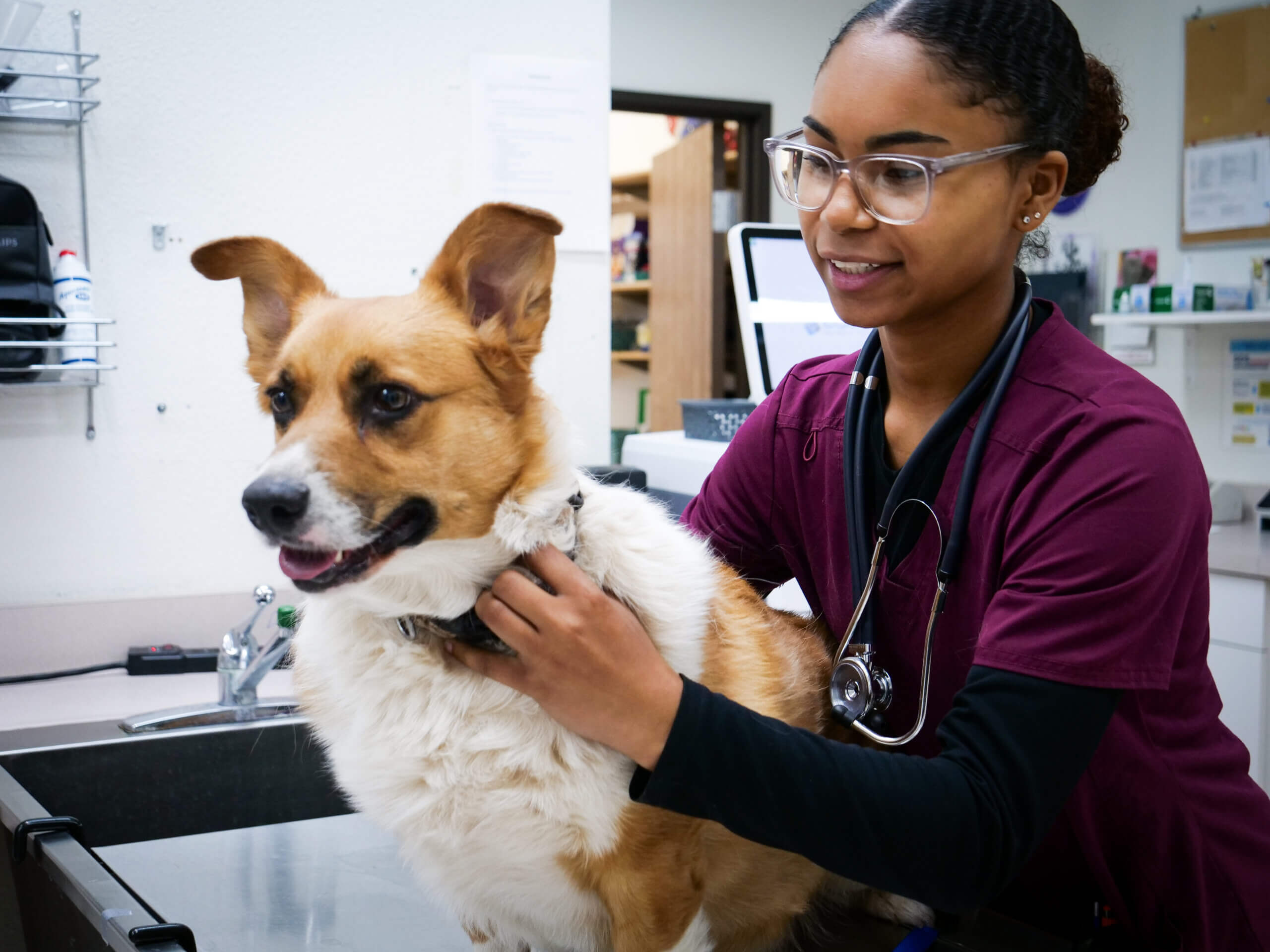When Every Second Counts: How an emergency vet Can Make All the Difference
When Every Second Counts: How an emergency vet Can Make All the Difference
Blog Article
Everything About Vet Surgical Procedure: Recognizing the Significance of Expert Take Care Of Your Family pets
Vet surgery is a vital part of family pet healthcare. It incorporates different treatments, from routine elective surgical treatments to immediate interventions. Understanding the details of these surgeries can assist pet dog proprietors make educated decisions. The prep work, implementation, and healing phases are vital for ensuring the wellness of pets. With appropriate understanding, owners can browse the intricacies of veterinary care. What elements should be taken into consideration prior to a pet dog undergoes surgical treatment?
Kinds Of Vet Surgeries
When a family pet requires surgical treatment, understanding the various sorts of veterinarian surgical treatments can help animal proprietors make notified decisions. Veterinary surgeries can be extensively categorized into three major kinds: elective, immediate, and emergency situation surgical procedures. Optional surgical treatments, such as spaying or neutering, are prepared procedures that are not instantly deadly. Urgent surgical treatments, like those for international body elimination, should be performed quickly yet are not lethal in the moment. Emergency situation surgeries, such as those attending to serious trauma or inner blood loss, are vital and require instant attention.Additionally, surgeries can vary in complexity, varying from minimally intrusive laparoscopic procedures to extra considerable open surgical treatments. Each type of surgery lugs its own threats and recuperation procedures. Understanding these classifications enables family pet proprietors to take part in significant discussions with veterinarians, bring about better outcomes for their precious pet dogs.
Planning for Your Family pet's Surgical treatment
Planning for a family pet's surgical treatment involves a detailed checklist to guarantee all basics are covered. Reliable interaction with the vet is crucial for understanding the treatment and any type of required pre-operative steps - emergency vet bellingham. Additionally, having clear post-operative care directions will aid owners offer the most effective assistance for their recovering pets
Pre-Surgery List Essentials
Ensuring a smooth surgical experience for an animal calls for cautious prep work and interest to information. A pre-surgery list is essential for animal proprietors to comply with. Initially, confirming the set up surgical procedure date and time is important. Owners need to likewise confirm that their pet dog has not eaten according to the vet's instructions, usually for 8-12 hours prior to surgery. Collecting essential medical records, consisting of vaccination history, is very important for the vet's evaluation. It is additionally advisable to prepare a comfortable room in your home for the family pet's recuperation after surgical procedure. Proprietors need to have a strategy for transportation to and from the vet clinic, making sure that the pet is protected and comfortable throughout the journey. Following these actions can greatly improve the surgical experience.
Interacting With Your Vet

Efficient communication with the vet is crucial for a successful surgical experience for pets. Owners should be prepared to review their animal's case history, including any type of pre-existing conditions, medicines, and allergies. This details assists the vet analyze threats and tailor the medical strategy as necessary. Furthermore, family pet owners must ask questions relating to the treatment, anesthetic, and expected outcomes to ensure they completely comprehend the procedure. Clarifying any doubts can alleviate anxiousness for both the family pet and the owner. It is additionally vital to interact any type of behavior changes or problems observed in the animal leading up to the surgical treatment. Ultimately, clear discussion promotes depend on and cooperation, making certain that pets receive the very best possible care during their medical trip.
Post-Operative Care Instructions
After reviewing the procedure with the veterinarian, pet dog owners need to concentrate on post-operative care guidelines to promote a smooth recuperation for their family pets. These directions generally consist of monitoring the surgical site for indicators of infection, such as soreness or discharge. Pet dogs might need to be kept one's cool and constrained to avoid extreme movement that can disrupt recovery. Discomfort management is essential, so owners ought to comply with the veterinarian's assistance on carrying out medicines. Furthermore, nutritional restrictions might be advised to stay clear of intestinal distress. Routine follow-up visits are essential to guarantee proper recovery and address any kind of problems. By adhering to these post-operative care guidelines, family pet owners can significantly add to their animal's healing and general health.
The Surgical Process Explained
The medical process for animals encompasses vital actions that guarantee their safety and security and recuperation. Pre-surgery preparations are important for decreasing risks, while post-operative care guidelines play an important function in advertising recovery. Recognizing these elements helps family pet proprietors navigate the surgical experience better.
Pre-Surgery Preparations
Before a pet dog undergoes surgical treatment, a number of important preparations should happen to guarantee a secure and successful procedure. Initially, a thorough veterinary examination is essential to analyze the animal's total health and wellness and determine any kind of potential dangers. This might consist of blood tests, imaging, or various other diagnostics. The vet will additionally review anesthesia options tailored to the pet's certain needs. Additionally, animal owners are generally advised to hold back food and water for a defined time prior to surgical treatment to minimize the danger of complications throughout anesthesia. It is necessary for proprietors to offer a complete medical background, including any type of drugs or allergic reactions, ensuring the surgical group has all essential details. Correct interaction and adherence to pre-surgery standards can considerably improve the outcome of the treatment.
Post-Operative Treatment Standards
Appropriate post-operative care is essential for making sure a pet dog's recovery following surgical procedure. read here After the procedure, animals need to be checked closely for any kind of signs of difficulties, such as too much bleeding, swelling, or unusual behavior. It is necessary to follow the veterinarian's guidelines regarding medicines, including pain relievers and antibiotics. Family pets should be kept in a silent, comfy atmosphere to lower tension and promote recovery. Limiting task is crucial; short, leashed strolls might be needed, yet leaping or running need to be stayed clear of. Routine follow-up consultations need to be scheduled to assess the recovery process. In addition, the medical website has to be kept clean and dry, with any type of indicators of infection reported to a veterinarian immediately. Following these standards boosts recovery outcomes.
Anesthesia and Discomfort Monitoring
Efficient anesthetic and pain administration are necessary components of vet surgery, making certain that pets remain comfy and risk-free throughout the treatment. Veterinarians analyze each animal's individual needs, taking right into account factors such as age, weight, wellness standing, and the kind of surgery being performed.Anesthesia procedures generally include a combination of pre-anesthetic medications, induction representatives, and inhalant anesthetics, allowing for specific control over the animal's degree of awareness. Monitoring throughout surgical treatment is important; veterinarians continually observe vital indications to resolve any prospective problems promptly.Pain administration strategies may include opioids, non-steroidal anti-inflammatory drugs (NSAIDs), and regional anesthetics, tailored to the family pet's specific situation. This recommended you read multifaceted approach aids reduce discomfort and advertises a smoother medical experience. By prioritizing efficient anesthetic and discomfort management, veterinary experts enhance the total well-being of pet dogs undergoing procedures, ensuring they obtain the highest requirement of care.
Post-Operative Treatment and Healing
Following surgery, the focus shifts to post-operative treatment and recuperation, which is essential for guaranteeing a family pet's risk-free return to typical tasks. Throughout this period, animals need a quiet, comfortable setting to aid recovery. Proprietors ought to very closely check their pet dogs for any type of indicators of pain or unusual behavior.Veterinary guidelines typically consist of particular guidelines connected to medicine management, injury care, and dietary adjustments. It is important to comply with these referrals to minimize complications and advertise recovery. Pets might need to be restricted from vigorous activities, such as running or leaping, during their recuperation period (canine tplo surgery).Regular follow-up appointments with the veterinarian enable tracking of the animal's development and timely adjustments to the treatment plan. Supplying emotional support and friendship can also enhance a family pet's healing experience, aiding to ease stress and anxiety and stress and anxiety. On the whole, diligent post-operative care plays a considerable function in attaining an effective healing
Recognizing Issues After Surgery
Exactly how can family pet owners recognize issues after surgery? Recognition of particular indicators is crucial for ensuring the wellness of animals throughout recuperation. Common signs include too much swelling, soreness, or discharge at the medical website, which might represent infection. Additionally, persistent discomfort, shown by whining or hesitation to move, must motivate immediate attention. Adjustments in cravings or water intake can additionally indicate problems; a decrease in these habits may signify pain or distress.Moreover, pet dog owners must monitor their pets for any uncommon behavior, such as sleepiness or difficulty breathing, as these can be indications of major concerns. Vomiting or looseness of the bowels adhering to surgery might require immediate veterinary examination. Identifying these difficulties early can considerably affect an animal's healing procedure, emphasizing the relevance of vigilance and punctual communication with a vet for any concerning symptoms.
The Duty of Vet Experts in Surgical Care
Veterinary specialists play see this website a necessary duty in ensuring the safety and success of operations for pets, especially adhering to surgical procedure when keeping an eye on and care are critical. These specialists consist of vets, veterinary service technicians, and assistance team, every one of whom contribute specialized abilities to the surgical process.Before surgery, veterinarians conduct detailed assessments to examine the pet's health and wellness, ensuring that any kind of underlying problems are taken care of. Throughout the treatment, the surgical group supplies anesthetic, maintains clean and sterile environments, and checks essential indications, very important for decreasing risks.Post-operative care is just as significant; vet specialists observe for difficulties, handle discomfort, and guide proprietors on healing methods. Their competence allows them to acknowledge early signs of distress or infection, guaranteeing prompt intervention. Ultimately, the joint efforts of vet specialists in medical treatment foster a secure environment, advertising the wellness of family pets throughout the surgical trip.

Often Asked Concerns
How Do I Choose the Right Veterinary Cosmetic Surgeon for My Family pet?
Selecting the ideal vet surgeon includes looking into qualifications, reviewing reviews, and examining the facility's environment. It is important to assess the cosmetic surgeon's experience with certain treatments and their interaction style when making a decision.
What Are Common Misconceptions Regarding Veterinarian Surgeries?
Typical mistaken beliefs about veterinarian surgeries include ideas that they are constantly risky, unneeded, or for emergencies. Lots of pet dog owners take too lightly the benefits of preventative treatments and the ability associated with vet surgical care.
Just How Much Will My Pet dog's Surgery Cost?
The cost of a pet's surgical treatment can differ substantially based upon elements such as the type of treatment, the vet's experience, and geographic location (emergency vet bellingham). Generally, costs range from a couple of hundred to a number of thousand bucks

Can My Family Pet Eat Prior To Surgery?
Prior to surgical procedure, it is generally recommended that animals avoid eating for a specific duration. This fasting helps in reducing the threat of complications during anesthetic. Proprietors should consult their vet for exact directions customized to their pet dog's needs.
What happens if My Pet Has Pre-Existing Health Conditions?
When a pet has pre-existing health and wellness conditions, it's crucial for the vet to examine these variables before surgery. This examination warranties ideal safety measures are taken, minimizing dangers and optimizing the pet's general security during the procedure.
Report this page